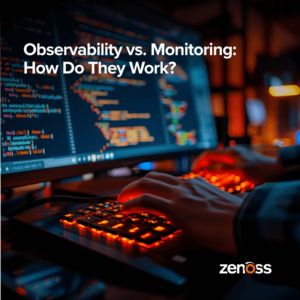Imagine this scenario: Your staff has just wheeled in your shiny new Converged Infrastructure. Then the CFO calls – the person instrumental in getting you this amazing new equipment – and wants to move several key finance applications from legacy infrastructure to the new CI system. They need the same SLAs and compliance reports across all the finance apps. Great, let’s make that happen!
Unfortunately, none of your myriad IT monitoring solutions can monitor the full CI stack. Monitoring it as a silo won’t work, since you won’t be able to deliver the required cross-platform compliance reports. Using the monitoring solution included within the CI – which comes with its own dashboard – is not something you can afford with your existing resources. Reaching out to your IT monitoring framework vendor, you find out that connecting to the main console can be done, but it will require a few months of custom development and a hefty services bill. You now face the miserable experience of telling the CFO “No.”
Roadblocks: How on earth did we get here?
Have you ever found yourself in a similar situation? If you have, you’re not alone. There are so many roadblocks that have been thrown in the way of implementing efficient monitoring in the enterprise that this is a commonplace occurrence.
The problem starts with legacy framework solutions that promise to monitor your infrastructure end-to-end. It quickly becomes clear that doesn’t really work, so each IT department orders their own point product tools. Every time a new technology brought onboard, they need a new tool to monitor it. You end up with a ton of specialized tools that only monitor a small piece of the total infrastructure supporting the any new service. Stitching together these pieces of information is expensive and time consuming – so you end up having to say “No” to new services because you simply don’t have the resources to do it.
Breaking down silos
The proliferation of point product monitoring tools reinforce the silos that already exist between IT groups. Unified monitoring, on the other hand, gives you an alternative route to service monitoring – one that avoids the standard roadblocks. By pulling availability and performance data directly from managed resources, elemental management tools, and even frameworks and monitoring point products, it creates a transparent view of your end-to-end infrastructure that EVERYONE can access. It transcends organizational silos to put everyone on the same page, helping provide a service-centric view needed to keep services up and running.
Because unified monitoring solutions, such as Zenoss Service Dynamics, are built with open, agentless architectures, they are easy to implement and extend. That means that saying “Yes” to monitoring new services is much easier.
Learn More about Unified Monitoring
Supporting business services – whether it is the latest finance app or a revenue-generating order processing service – is the goal of any IT operations organization. Don’t let monitoring be the roadblock standing in your way.
If you would like to learn more about the business and financial impact of point product tools vs. unified monitoring, check out the Forrester Monitoring IT Business Services report or read our Making the Business Case for Unified Monitoring white paper.








